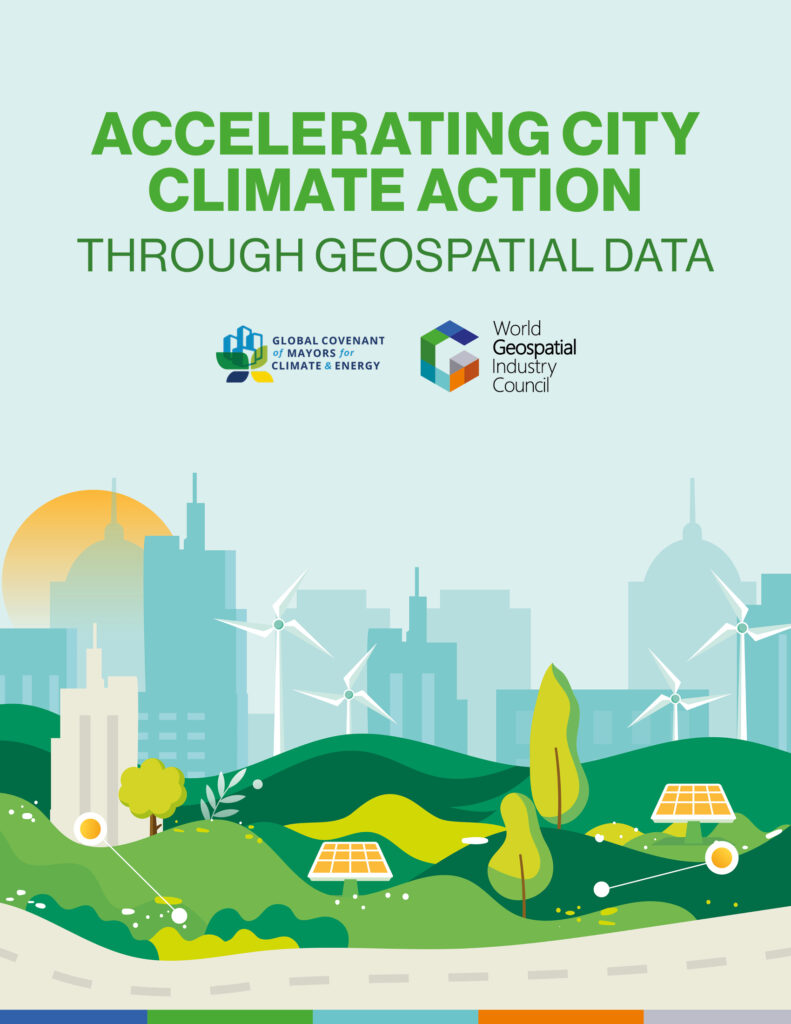In a decisive move towards forging ahead with tangible climate action in cities, the Global Covenant of Mayors for Climate & Energy (GCoM) and the World Geospatial Industry Council (WGIC) jointly launched today at Cities & Regions Summit of the sixth session of the United Nations Environment Assembly (UNEA-6) in Nairobi, Kenya, a new white paper titled “Accelerating City Climate Action through Geospatial Data”.
As cities and local governments continue to face mounting and myriad pressures, tackling climate change has become evermore challenging – especially where in-house capacity and knowledge are low. This white paper sheds light on how geospatial technology can change the game for city-scale data, with applications that can help local governments understand and reduce emissions, identify climate risks and vulnerabilities, and catalyze energy transitions.
Overall, the white paper identifies three key areas for action:
- City-Scale Geospatial Data for Assessments: Prioritize the use of geospatial data for Climate Risk and Vulnerability Assessments (CRVAs) and Greenhouse Gas Emissions Inventories (GHGIs) at the city level. This can significantly enhance cities’ capabilities to understand risks and proceed with concrete actions.
- Urban Demonstrations with Geospatial Solutions: Explore the application of geospatial solutions for urban demonstrations. This involves showcasing practical uses of geospatial technology in real urban settings, thus offering tangible examples for cities to learn from.
- Enhanced Climate Action Monitoring and Evaluation: Advance the implementation of city climate action monitoring and evaluation processes. Leveraging geospatial data and respective solutions can provide urban areas with valuable insights for effective decision-making and impact assessment.
This collaboration between GCoM and WGIC aims to underpin the potential of applied geospatial technology in cities, showcasing the collective efforts needed for emissions reduction, resilience building, and sustainable energy infrastructure.
The white paper showcases the changing landscape of the geospatial industry, emphasizing the need for a strong connection between data users and providers. Therefore, urban areas should have a comprehensive view of both public and private resources available to them, optimizing decision-making and planning.
This collaborative white paper comes at a moment where a data-driven approach to city climate action is more essential than ever before, thus providing practical insights and a roadmap for cities to effectively address climate challenges and work towards a sustainable future.
Are you interested in finding out more?
